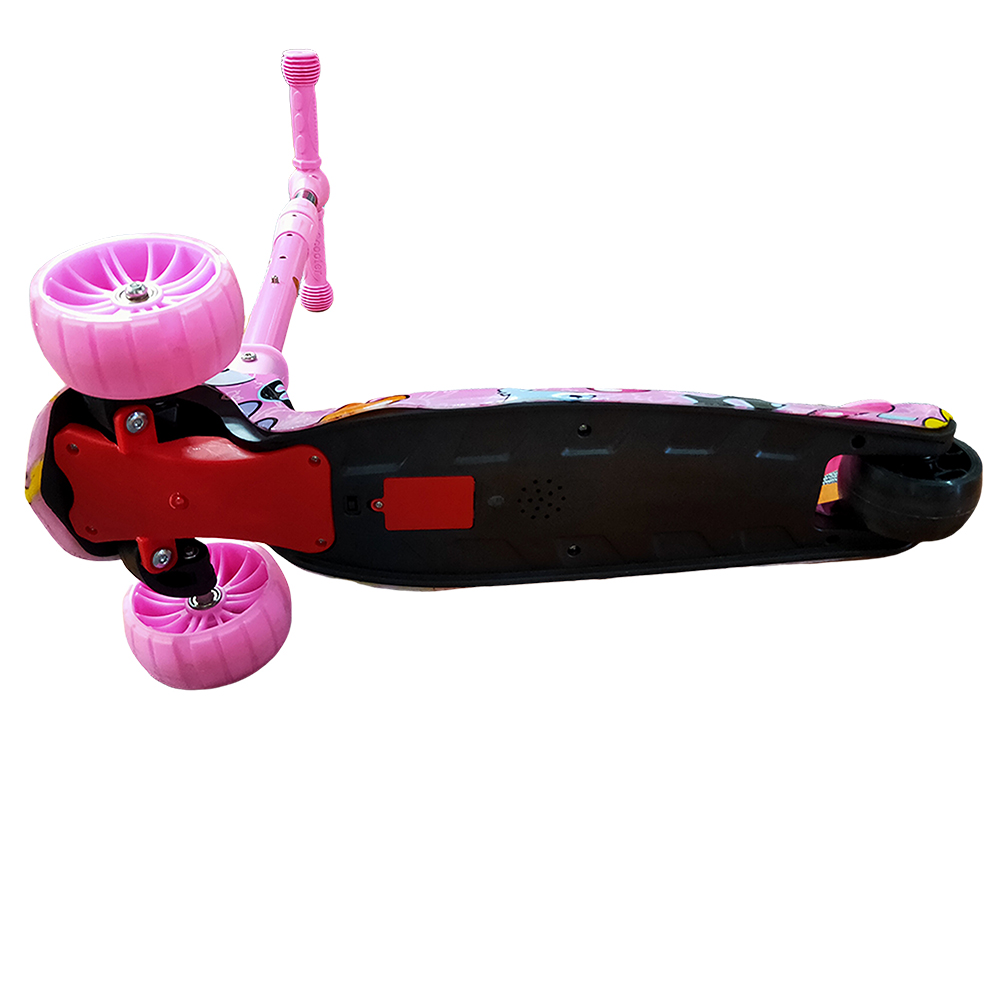Trade-In Trends Kids' Scooters in 2017
In 2017, the vibrant market for kids' scooters experienced notable transformation, reflecting both evolving consumer preferences and advances in technology. The trend of trade-ins emerged as a key feature of this market, inspiring families to reconsider their purchasing strategies. This article explores the various dimensions of kids' scooter trade-ins, including their economic impact, environmental considerations, and the overall benefits for both consumers and businesses.
The trade-in model, often associated with electronic devices and vehicles, began making significant inroads into the toy and recreational vehicle markets, particularly for kids' scooters. Parents frequently face the challenge of finding a sustainable solution for the scooters their children outgrow. Traditional methods of disposal often lead to waste, contributing to environmental challenges. The introduction of trade-in programs offered a practical alternative, allowing families to exchange their used scooters for discounts on new models while promoting responsible consumption.
Trade-In Trends Kids' Scooters in 2017
Another aspect influencing kids' scooter trade-ins was the rapid pace of innovation in scooter design and technology. Manufacturers introduced new models featuring advanced materials, enhanced safety features, and interchangeable parts, leading to exciting options for children. As a result, scooters became more desirable, prompting parents to consider upgrading their children's rides more frequently. Instead of allowing older models to languish in garages or storage units, trade-in programs provided a streamlined way for families to transition to the latest models while offsetting costs.
kids scooter trade in 2017

The economic implications of trade-in programs for kids' scooters were significant in 2017. Retailers and manufacturers benefited from increased customer loyalty, as trade-in incentives encouraged repeat purchases. Many brands created dedicated trade-in platforms, facilitating the process for consumers and enriching the shopping experience. Parents appreciated the transparency and ease with which they could trade in their child's scooter, often leaving the store with an upgraded model at a fraction of the price they would have otherwise paid.
Moreover, the trade-in trend helped create a fruitful dialogue between companies and consumers. Businesses began to gather data on consumer preferences based on trade-in patterns, enabling them to fine-tune their offerings and align them more closely with market demand. This feedback loop not only fostered customer engagement but also spurred further innovation within the industry.
In addition to the economic and environmental benefits, scooter trade-in programs fostered a sense of community among families. Many parents participated in local events or online platforms that promoted scooter trade-ins, sharing experiences and tips with one another. Such initiatives often emphasized the shared values of sustainability and responsible consumerism, creating a supportive environment where families could both save money and contribute to a healthier planet.
As we reflect on the scooter trade-in phenomenon of 2017, it is clear that this trend represented a meaningful shift in how families approached the purchase and disposal of children's recreational items. The combination of financial incentives, environmental consciousness, and community engagement fueled a robust dynamic that transformed the market for kids' scooters. As the industry continues to evolve in response to technological advancements and consumer sentiment, it is likely that trade-in programs will remain a prominent feature, offering families efficient solutions and encouraging sustainable practices.
In conclusion, kids' scooter trade-ins in 2017 marked a pivotal moment in both the toy market and the larger arena of consumer goods. By prioritizing sustainability and embracing modern innovations, families not only found practical ways to navigate the lifecycle of their children's scooters but also contributed to shaping a more responsible future for the next generation. In the years that followed, the lessons learned from this trend continue to inspire new practices in both the toy industry and beyond, emphasizing the importance of sustainability, community, and smart consumer choices.
-

 Scoot&RideKids Child Kick Push Scooter 3 Wheels with LED Flashing Tilt Lean Boys Girls Scooter
Scoot&RideKids Child Kick Push Scooter 3 Wheels with LED Flashing Tilt Lean Boys Girls Scooter




- 4
$33.17 -

 Scoot&RideKids Scooter Child Kick Flashing LED Light Up 3 Wheel Push Adjustable Folding 3
Scoot&RideKids Scooter Child Kick Flashing LED Light Up 3 Wheel Push Adjustable Folding 3- 0
$25.52 -

 Scoot&RideKids Scooter Child Kick Flashing LED Light Up 3 Wheel Push Adjustable Folding 2
Scoot&RideKids Scooter Child Kick Flashing LED Light Up 3 Wheel Push Adjustable Folding 2- 0
$33.17 -

 Scoot&RideKids Scooter Teens Foldable Kick Push Scooter Adjustable Height Safe 2 Wheels
Scoot&RideKids Scooter Teens Foldable Kick Push Scooter Adjustable Height Safe 2 Wheels




- 4
$49.99
Meet our partners and discover what powers their creativity!
When you register for a Lohas scooter, you will receive a 10% discount on your first order and can be notified of sales, new product launches and other offers in advance.









